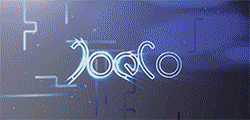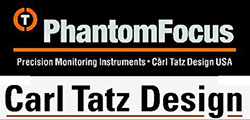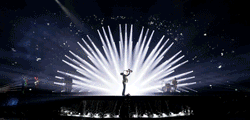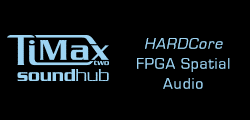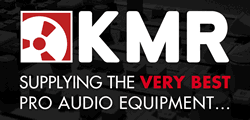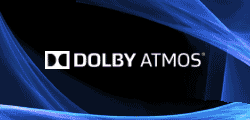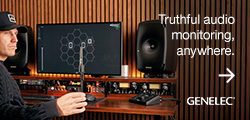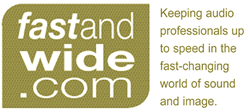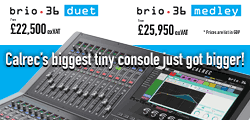Following the SD Ten console launched at the Pro Light & Sound show earlier in 2011, the SD10-24 is the latest and most compact addition to DiGiCo’s SD Series.
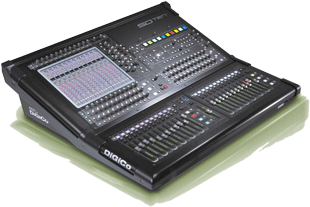 ‘When we introduced the SD8-24, which was primarily designed with the corporate market in mind, it was an immediate hit,’ says DiGiCo MD, James Gordon. ‘The SD10-24 is based on the same thinking – to provide a smaller footprint console for a particular segment of the market, but with no reduction in functionality or number of inputs and outputs.
‘When we introduced the SD8-24, which was primarily designed with the corporate market in mind, it was an immediate hit,’ says DiGiCo MD, James Gordon. ‘The SD10-24 is based on the same thinking – to provide a smaller footprint console for a particular segment of the market, but with no reduction in functionality or number of inputs and outputs.
‘With the SD10-24 we have smaller venues in mind and, because we also have the SD10-B broadcast specific desk, we are producing an SD10B-24 which we are confident will be particularly useful for OB trucks, where space is often limited but a high channel and bus count is required to handle 5.1 audio.’
The SD10-24 is under 1m in width, with a worksurface constructed from anodised aluminium, overlaid with polycarbonate panels to provide clear and concise user feedback. It boasts the same large 15inch, touch sensitive screen as the SD Ten, providing both information and fast control of all the main parameters.
The control surface features 25 100mm touch sensitive faders, providing access to the console’s large number of channels, which include 96 with full processing, 12 of which can be configured as full Flexi Channels – and outputs that can be assigned across the surface. All inputs have dual mono inputs for fast Main and Alt channel switching.
Smart Key Macros are provided, accessed via four layers of ten backlit LCD keys. These can be programmed to control any function, simple or complex, for recall at the push of a button.
Local I/O, positioned on the rear of the console, comprises eight mic inputs, eight line outputs, eight mono AES I/O, two Modi connections with redundant cabling connections, 16 GPI and GPO connections, Midi, plus Wordclock, Madi and Optocore for synchronisation.
The SD Ten processing includes channel delay; single and multichannel presets; HPF and LPF with an industry leading 24dB/octave; four bands of parametric EQ with band curve selection; compressor and date; dual insert points and access to all busing on input channels. Standard output channel processing includes output delay; eight bands of parametric EQ (previously only seen on the SD7); compressor and gate; dual insert points; groups with bus-to-bus routing, plus auxes that have direct talk to output with dim control.
Dynamic EQ provides both expansion and compression on all four bands of parametric EQ. These powerful processors can be assigned to any of the input or output channels, whether stereo or LCR, with ten units being allocated as required. In addition, any input or output channel can be mastered via the multi-band compressors – again, ten units can be allocated.
Forty-eight assignable buses can be configured as mono or stereo groups, or auxiliary busses. There is also an additional stereo or LCR Master bus and 16x12 output matrix, highlighting the SD range’s renowned routing flexibility. Meanwhile, dual solo buses give monitor engineers accurate monitoring security.
Insertable FX and graphic EQs can be routed, controlled and snapshot recalled for the most complex show design. The 24 graphics can easily be inserted and controlled from the worksurface and ten Stealth stereo FX units can be configured at any time from the palette of thirty-three Stealth FX. Integration with Waves plug-ins offers further processing options.
Unlike all other Sound Grid platforms, DiGiCo provides complete control of plug in parameters, as well as recall of snapshots and single loading / saving, directly from the worksurface. Sixteen stereo Sound Grid racks can be inserted, with up to eight plug-ins in each rack.
Like all DiGiCo consoles, the SD10-24 software runs on a standard PC or Intel-based Macintosh for offline preparation and remote control of the console. One SD10-24 can also be linked to another, using a standard Cat5 crossover cable, providing 50 faders for control. In this configuration, the audio engine of the first SD Ten provides complete redundancy for the other.
SD10-24 expansion options:
- Second-generation Optocore optic connections. Just like the SD7, an SD Ten can connect to up to 14 SD, Mini, Nano or D-Rack IDs with 448 audio channels on a single redundant optical loop.
- Five redundant consoles can share all inputs from the stage racks, and outputs on the system can be assigned in blocks of eight. For example, a single rack can provide 56 inputs to both consoles with 40 of the outputs assigned to the monitor console and 16 used by front of house for feeds back to the stage.
- One console can even directly route outputs to another console on the loop, for tie lines.
- D-Rack, SD-Rack, Mini-Rack, Nano-Rack, SD7, SD Ten and SD10-24 can operate together at 96kHz. The audio advantage here is clear, but also means just over 1ms of latency when routing a stage input through a channel and buss, with processing back to a stage output.
- Sound Grid Waves can be added, allowing full connection and control of a Waves Sound Grid, providing low latency plugins on a floating point digital console.
- Connectivity to the outside world isn’t restricted to just the DiGiCo rack family. The SD Ten comes with different I/O options because tailored DiGiCo systems and complex set-ups are user configurable.
- Dual hot swap, switch mode, PSUs as standard.
More: www.digico.org


